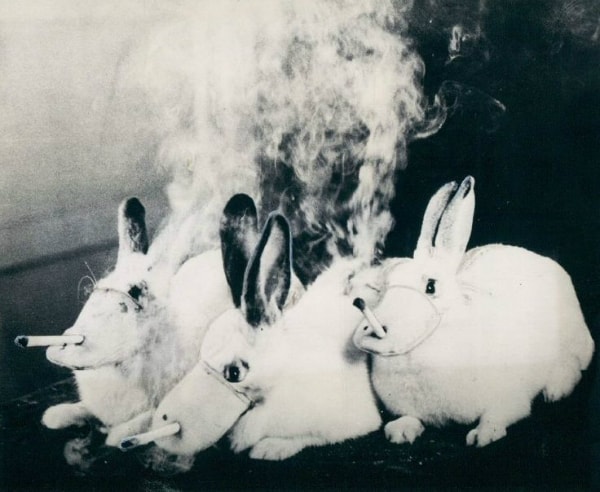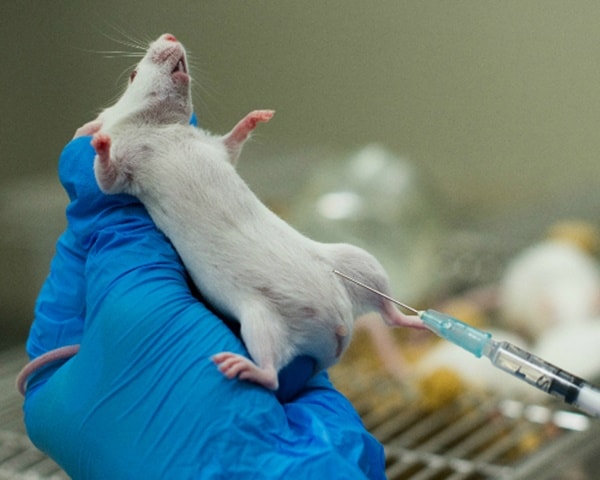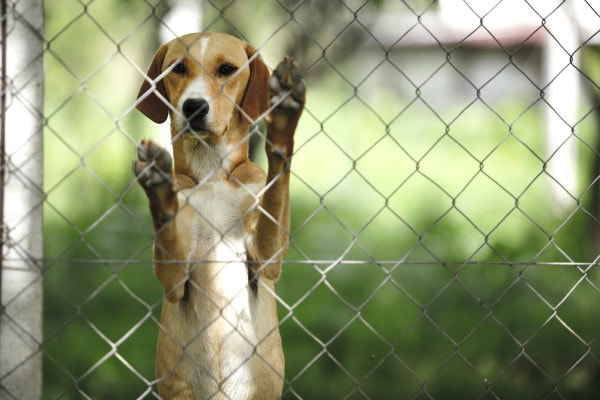Download Free Vegan Starter Kit -

7 Reasons Why Animal Experimentation Is Just. Not. Right.
In the U.S., over 2.6 crore animals are experimented on every year. Surely there must be a few valid reasons for doing so, but when we look at the overwhelming evidence of why animal testing is bad science, those reasons aren’t good enough anymore. Here are 7 strong reasons why it needs to be re-considered.
1. Issue of Informed Consent
When it comes to humans, the first step taken before they participate in any form of research is informed consent. Generally, this means that human subjects have to sign a form stating that they agree to the terms and conditions of the experiment, and are willing to participate in the research.
But when it comes to conducting potentially life-threatening experiments on animals, there is no system of informed consent here. This is obviously because animals don’t have the gift (or curse) of knowledge that we humans have. Supporters of animal research would say that we can experiment on them because they are not as knowledgeable or important as humans.
On the contrary, just because they don’t possess the knowledge of giving us permission to experiment on them, doing so means we are exploiting them. Would we experiment on a mentally challenged person who will not understand the concept of informed consent? No? Why not; we do it to animals.

2. Ever Seen an Animal Smoke?
One of the most common diseases in the Western countries is lung cancer, due to smoking. Would you rather test a potential cure on the species that needs to be cured or instead create a simulated environment in an animal namely dogs or mice to find a cure for this disease in humans?
Any scientist would laugh at the idea of using humans to test potential cures for animal diseases, then why are we not applying the same logic the other way around when it comes to animal testing.

3. Animal Test Results Are Not Accurate Enough for Humans
92% of the drugs that pass animal testing fail in the first trial on human subjects. It is estimated that human and animal test results agree only 5% - 25% of the time. Animals suffer a variety of side effects with the application or ingestion of the chemicals being tested, 75% of which never occur in humans and over 50% of the side effects found in humans are not found while animal testing.

4. Alternatives to Animal Testing
Cures for humans should be tested on humans only; experimenting on animals is just bad science. Companies like EpiDerm, SkinEthic, and EpiSkin have already developed human skin equivalent systems which can be used for testing chemical reactions. The results derived from tests using these technologies are 90-95% accurate, so the product’s safety would be guaranteed.
According to the official EpiDerm website, their product (skin) can be used for the following kinds of tests, such as dermal research, skin irritation, EpiDermal barrier, phototoxicity, inflammation, DNA repair, genetic toxicity, skin corrosion, drug metabolism, and anti-oxidants.

5. We Are Not 70 kg Rats
Thomas Hartung, Professor of evidence-based toxicology at Johns Hopkins University once said, “When it comes to drug safety tests, people are not 70 kg rats.” He was suggesting that animals and humans are not anatomically similar. For example, the famous Thalidomide disaster that occurred in the 1950s is a testimony to this fact in which a sleeping pill was released to the public which caused 10,000 babies to be born with deformities. Even though no deformities were observed in animal fetuses during animal testing.
A drug for arthritis called Vioxx was tested on mice and the results showed that it had a positive effect on their hearts. After its release, it caused sudden cardiac deaths and more than 27,000 heart attacks in humans before it was finally expelled from the drug stores.

6. Animal Experiments are Super Expensive
The one thing that we would all agree on is that we all want our tax money to be used as efficiently as possible. And animal experimentation is not the way to do it. The Humane Society International did a cost analysis by comparing the cost involved in testing on animals to the cost incurred when using in-vitro methods. Here are the results.
| Type of Test | Cost if tested on Animals (in Rs.) | Cost if tested using In-vitro methods (in Rs.) |
|
Unscheduled DNA synthesis |
22,44,000 | 7,37,000 |
|
Rat Uterotrophic Assay |
19,84,000 | 4,82,000 |
|
Rat Phototoxicity Test |
7,70,000 | 87,000 |
Source - http://animal-testing.procon.org/#background
In-vitro testing methods can give us results in mere weeks, days, or even hours; whereas the traditional animal testing methods can take months or years to get results which, as already seen, are unreliable.
India, before dissection of frogs was banned, earned 67 crores per year from the export of frogs. These animals are important to the ecosystem as they control a lot of pests like crop destroying insects. So due to the decline in frogs, at the same time, India began spending 670 crores per year to import pesticides. Talk about irony.
-min.jpg)
7. Animal Experimentation Is Cruel and a Waste of Animal Life
According to PETA, “Animals are infected with diseases that they would never normally contract, tiny mice grew tumors as large as their own bodies, kittens are purposely blinded, rats are made to suffer seizures, and primates’ skulls are cut open and electrodes are implanted in them. Experimenters force-feed chemicals to animals, conduct repeated surgeries on them, implant wires in their brains, crush their spines, and much more.”
Point to be noted:
- Animals never gave us permission to test on them.
- Animals and humans are not the same, so the results aren’t applicable to humans.
- Non-animal testing methods are humane for the sake of both humans and animals.
- Non-animal testing methods cost only a fraction of the animal testing counterpart.
- Non-animal testing methods are a lot faster at producing results which are at least 95% accurate.
Supporters of animal testing often state that if it would not have been for animal testing we would not have had the cures for many of the diseases today. They are only partially correct in saying so because animal testing was the only major method ever employed to find a cure for human ailments. We would never know if better methods could have been invented and we can do nothing to change that. Although now, superior methods exist and we need to make the choice of selecting them to prevent any more animal casualties.

If you are wise enough to understand the repercussions of this experiment, there are a lot of ways to identify if a product has not been tested on animals. Look for “not tested on animals” logo.
References:
http://www.neavs.org/alternatives/in-testing
http://www.peta2.com/boards/topic/33-reasons-why-animal-testing-is-pointless/
https://www.dosomething.org/us/facts/11-facts-about-animal-testing
http://animal-testing.procon.org/#background
http://www.peta.org/issues/animals-used-for-experimentation/animals-laboratories/
https://www.mattek.com/products/epiderm/
Like This?
Read: Man Versus Might - Are We Still The Most Intelligent Species??
Read More: 11 Reasons To Visit An Animal Shelter At Least Once In Your Life!
AUTHOR

trending
Be a Vegan First Informer
Send us buzzworthy news and updates
Explore
Contact Us
About Us
Stay Connected
Copyright ⓒ 2017-2023. VEGAN PASSION PRIVATE LIMITED. All Rights reserved.
For more information, please write to hello@veganfirst.com
Registered Office Address: 55, 2nd floor, lane 2, Westend Marg, Saidullajab, Near Saket Metro Station, New Delhi, Gadaipur, New Delhi South West Delhi, DL

2.png)

.png)

.png)
2.png)
2.png)
2.png)


1.png)

